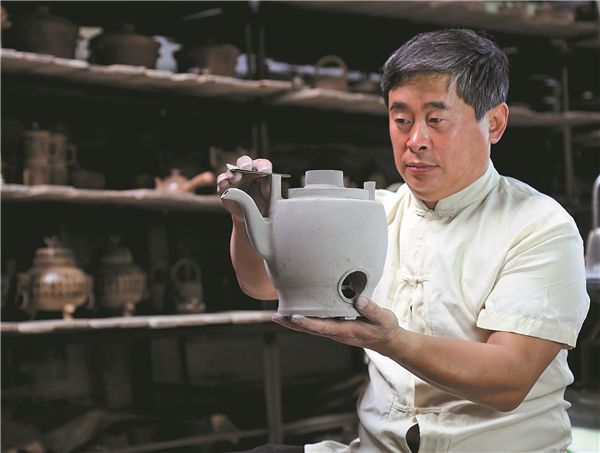

In the Qing Dynasty (1644-1911), Pingding earthenware was put on a pedestal after a widespread legend about Emperor Kangxi specifically asking for his medicine to be stewed in the pots.
"There's something to it," Zhang says.
"It is Pingding earthenware's strength in maintaining the stability of the medicine's properties, and preserving the original flavor and color of foods during cooking, that has made it so popular across the country," he adds.
Sitting in the middle section of the Taihang Mountains, Pingding is rich in mineral resources, of which large reserves of high-alumina soil, as well as refractory and siliceous clays, make excellent materials for producing earthenware.
The production process of Pingding earthenware is sophisticated, from material selection to the final glazing, each step requiring meticulous skill.
For example, the clay must be extracted 20 meters away from a local coal seam and be naturally weathered and refined.
"It has to be at the right balance of plasticity, malleability, and strength," Zhang says.
Arduous kneading is essential to increase the clay's stickiness and toughness.
The firing process is especially crucial, where the fuel and the earthenware must be precisely placed, and the temperature controlled accurately.
"The glazing process requires quick and exact movements to achieve the desired effect," Zhang says.
To date, Zhang has managed to develop more than 1,000 varieties of earthenware, and has restored the once-lost firing technique for thin-bodied items, the slimmest of which can be less than three millimeters.
"The earthenware that people see in daily life are generally thick and heavy to hold, but the fact is that, the thinner the earthenware, the better its permeability and thermal conductivity," Zhang explains.
Zhang experimented for three months and made his first thin-bodied teapot, but it exploded when he used it to boil water, spraying the hot liquid everywhere.